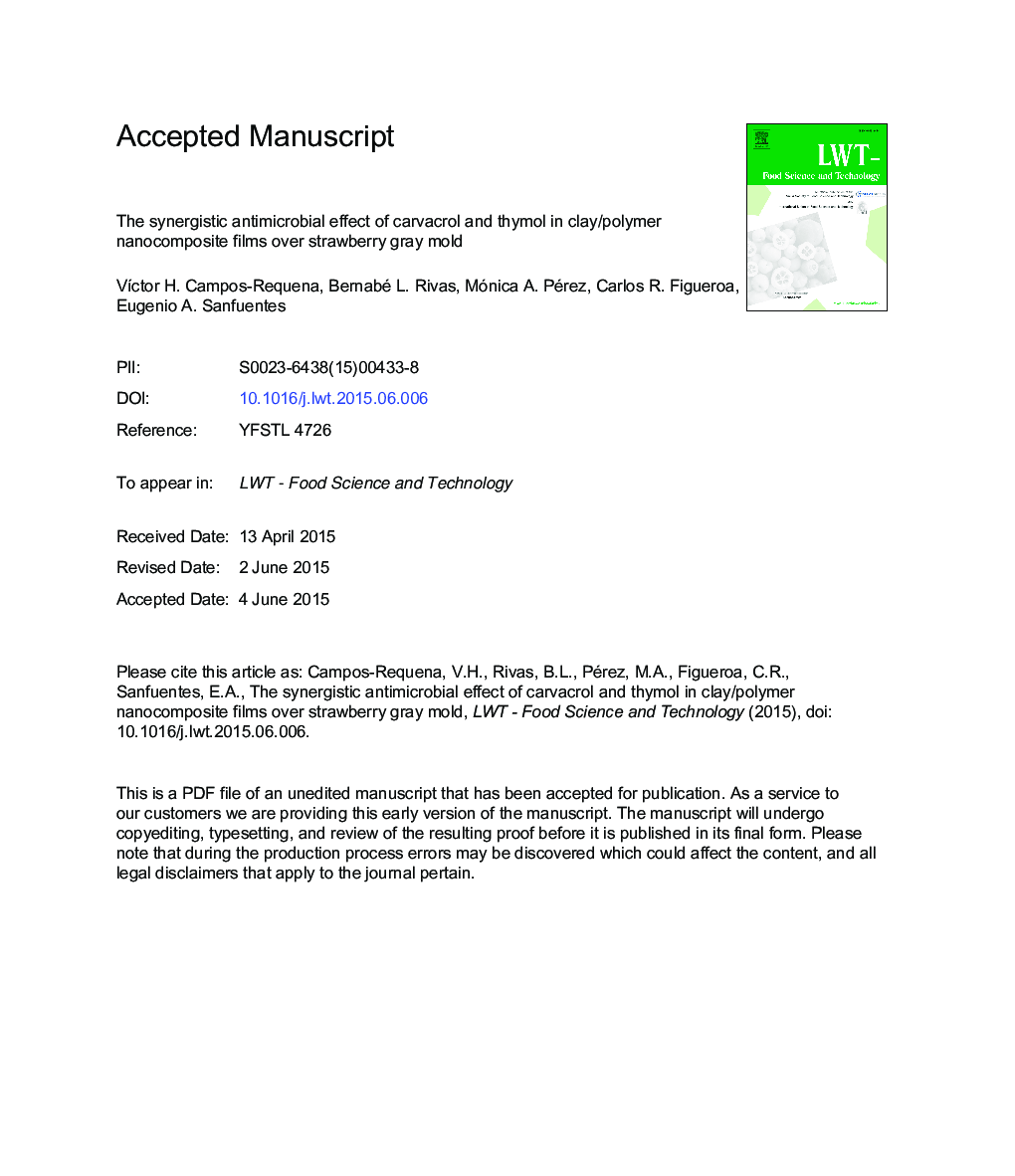| Article ID | Journal | Published Year | Pages | File Type |
|---|---|---|---|---|
| 6400806 | LWT - Food Science and Technology | 2015 | 27 Pages |
Abstract
The in vivo synergistic antimicrobial effect of the essential oils constituents (EOCs) carvacrol (CRV) and thymol (TML) included in low-density polyethylene/organically modified montmorillonite (LDPE/OMM) nanocomposite films were evaluated using strawberries inoculated with Botrytis cinerea. XRD analysis of an LDPE/OMM nanocomposite showed an increase in the interlayer distance with respect to the original nanoclay, indicating an intercalated morphology. Improved packaging properties, such as mechanical, thermal and rheological properties, with respect to the neat LDPE were achieved. An approximately 15% decrease in the release rate of the EOCs compared to neat LDPE was observed, indicating the potential of the films to function as controlled-release food packaging material. A synergistic antimicrobial effect was observed for the CRV:TML mixture against B. cinerea compared to a film containing only CRV, when the films were applied by indirect contact with the strawberries. The IC50 of the EOCs in the film was reduced from 40.4 mg gâ1 (CRV only) to 13.2 mg gâ1 (CRV:TML 50:50). Therefore, with only one third of the total EOCs concentration required for the single EOCs films, the CRV:TML-containing film provides effective inhibition of B. cinerea but without significant (p < 0.001) organoleptic alteration in strawberries, as described by discriminative sensory analysis.
Keywords
Related Topics
Life Sciences
Agricultural and Biological Sciences
Food Science
Authors
VÃctor H. Campos-Requena, Bernabé L. Rivas, Mónica A. Pérez, Carlos R. Figueroa, Eugenio A. Sanfuentes,
